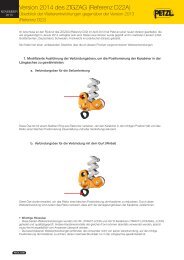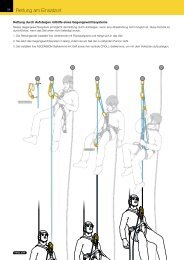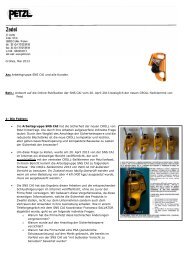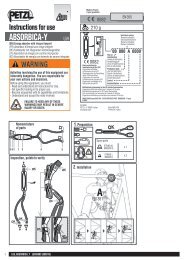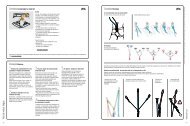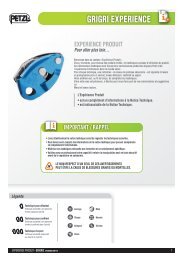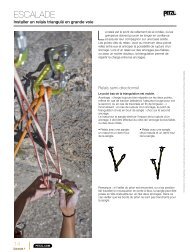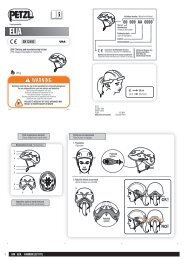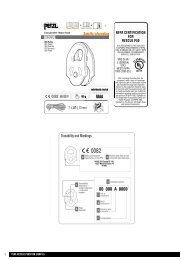Create successful ePaper yourself
Turn your PDF publications into a flip-book with our unique Google optimized e-Paper software.
NIGHT TRAIL RUNNING<br />
Declining lighting or constant lighting?<br />
42<br />
Contents<br />
© Lafouche<br />
In 2000, the TIKKA was introduced as the first compact<br />
LED headlamp. Since then, technology has continued to<br />
evolve: as a reference, the first TIKKA provided 9 lumens<br />
of maximum lighting. Today, the TIKKA XP 2 delivers<br />
80 lumens of lighting power in maximum mode. LEDs have<br />
also allowed headlamps to become extremely light and<br />
compact, and characterized by very long lighting duration.<br />
While the LED revolution has been significant in terms of<br />
power, the technology of the batteries themselves has<br />
not evolved proportionally. Concretely, the more powerful<br />
the LEDs become, the more energy they consume.<br />
Consequently, in a classic energy management model, the<br />
brightness of the headlamp will rapidly decrease in declining<br />
mode. Headlamps that allow constant lighting offer an<br />
alternative for maintaining brightness.<br />
Declining lighting<br />
Most compact headlamps provide brightness in declining<br />
mode, i.e. with an uninterrupted decline in power from the<br />
moment they are turned on. This drop in lighting power varies<br />
depending on the LEDs, the type of batteries, etc.<br />
For example, with a TIKKA XP 2 the light quantity is 80 lumens<br />
when first turned on using new batteries, and it is 54 lumens<br />
after the first half hour of use. After 80 lhours, the light output is<br />
considered unusable (below 0.25 lux, the equivalent of the light<br />
emitted from a full moon on a clear night).<br />
Headlamps with declining lighting offer longer lighting duration<br />
and high light output at the beginning of use. They are a<br />
reasonable compromise between light output and battery<br />
life. However, for many activities it is more important to have<br />
constant light quantity over a designated period of time.<br />
Constant lighting<br />
With this type of lighting, the lamp's discharge cycle is treated<br />
differently: the light output is constant during the specified<br />
battery life of the headlamp (outside of reserve lighting).<br />
With a TIKKA XP 2 with its rechargeable CORE battery<br />
configured for constant lighting, you will always benefit from<br />
the same quantity of light, whether you go for a one-hour or a<br />
four-hour run.



